At Grupo Rotoplas we strive constantly to keep evolving to bolster the connection between capabilities and technologies and the public that needs water and sanitation solutions. Innovation flows through our business processes and models, guiding the configuration and expansion of our solutions portfolio. We achieve this through work platforms, fostering our collaborators’ creative thinking, technology development and acquisition, disruptive solutions, and the adoption of new business models; this also enables us to bring greater efficiency to our processes and operations.
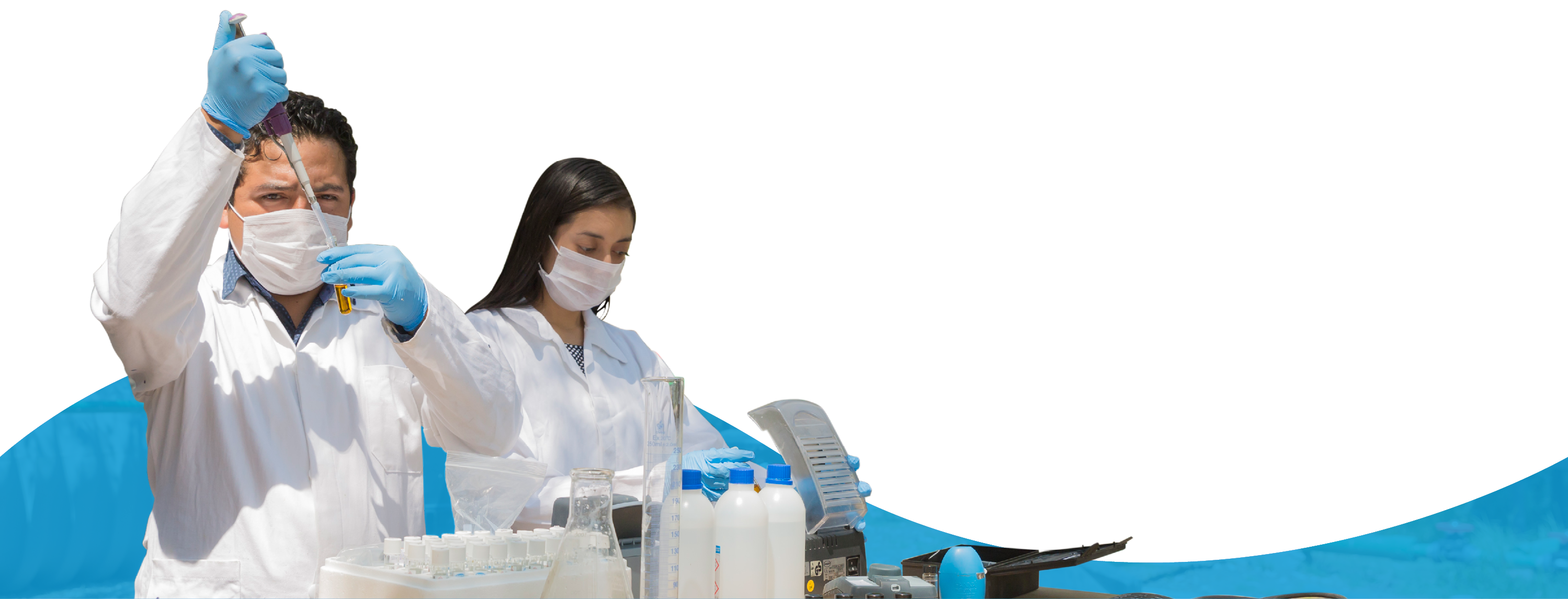
In order to offer effective solutions to the issues of water and sanitation, and to tackle new business opportunities on a large scale, we continue to consolidate the structure of our Innovation Department, integrating the qualified talent of 43 collaborators. In 2017, we destined a total of $48.9 million Mexican pesos to our innovation projects—47.7% more than a year earlier9. After investing in 2016 in Chile’s Advanced Innovation Center (AIC) and boosting the Plasma Water Sanitation System (PWSS)10 technology, in 2017 we acquired Canadian innovation center Sanzfield. This acquisition complements our growth strategy for the water treatment and recycling business and enables us to work on solutions to the problem of underutilization of wastewater11. Sanzfield develops water treatment and recycling systems, which use technologies that can remove organic matter from wastewater, without generating solid waste.
On a Group level, we manage different types of projects and initiatives and the necessary financial, human, and material resources through our three platforms based on the PMI methodology.
Convinced that our collaborators play a key role in the process of innovation, we decided to foster an internal culture of creative thinking and exchange of good practices among the various areas and countries where we have operations. We also seek to foster this culture of innovation among our external audiences, participating in innovation forums and events.
As a natural evolution, we continue to integrate a service approach in our portfolio, as well as in our way of doing business. In 2017, we strengthened our integrated solutions platform adding maintenance services.
Such is the case with our residential and institutional water purifiers where, in response to the trends observed on the markets, instead of offering a product, we are proposing a subscription to Purified Drinking Water Services, which include the purifier, its installation, and the maintenance service. This innovative solution contributes to reduce the use of plastic for jugs or bottles, as well as ensuring a suitable water quality for human consumption.
In a context where technology affects customers’ habits, we continue to explore e-commerce opportunities for the whole operation. One of them is the recent acquisition of the leading US platform specializing in the online marketing of water solutions. With it, we seek to benefit from the experience, synergy generation, and good practices to contribute to the development and growth of this and other services in the various markets where we participate. Among other benefits, this platform allows us to make inroads into new sales and distribution channels, aligning to consumers’ new buying habits, which contributes to their loyalty to our brand. This platform comprises companies Plasticwatertanks.com, P-M.com, and Nautical Outfitters, and creates a hybrid business combining online and brick & mortar stores.
On the other hand, acquired in 2016, Sytesa drives forth the supply of wastewater treatment and recycling services. In order to strengthen its business model, in 2017, we worked together with the Human Capital Department to develop our collaborators and acquire skills focused on service excellence. We also seek to highlight the added value of the range of services offered, compared to more basic services, or those requiring the client to operate the water treatment and recycling plant themselves.
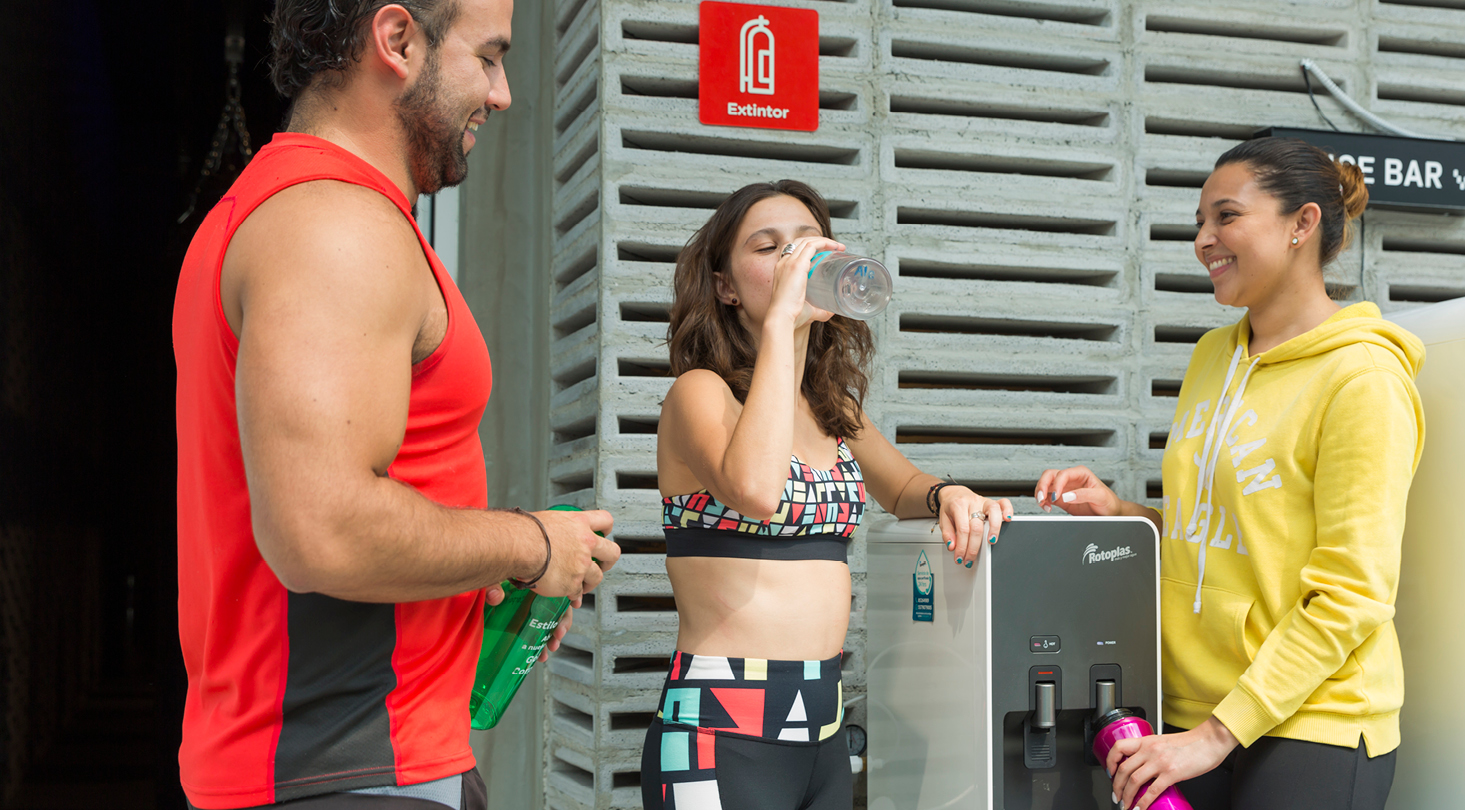
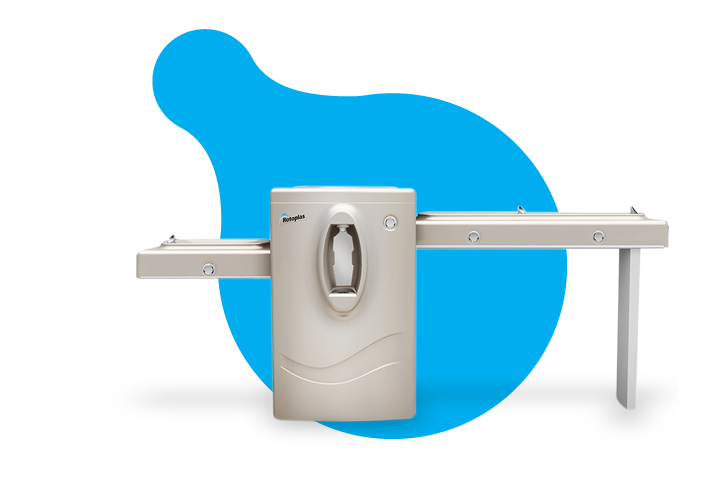
Our drinking water fountain line offers an integrated service comprising installation, water quality analysis, maintenance, and training. Thus, the contracts signed with government agencies consider a monthly maintenance service for 2 years, ensuring the quality of the water supplied by our drinking water fountains. Aware of the importance of the adoption and appropriation of our solutions, we have established dialogues with various institutions to foster post-sales training and beneficiaries’ sensitization.
In 2017, we confirmed our focus on providing solutions through a mixed business model that streamlines and boosts our product and service mix, keeping customers’ needs in the spotlight, to provide innovative water and sanitation solutions.
In 2017, we launched 12 new solutions to complement our individual and integrated solutions portfolio, developed in our R&D center (CID for its Spanish acronym) in Leon, Mexico. Within our waterflow solutions line, we can note Tuboplus Fortech- CT® pipes, for instance, whereas the 3.0 Drinking Water Fountain enriches our integrated solutions offer.
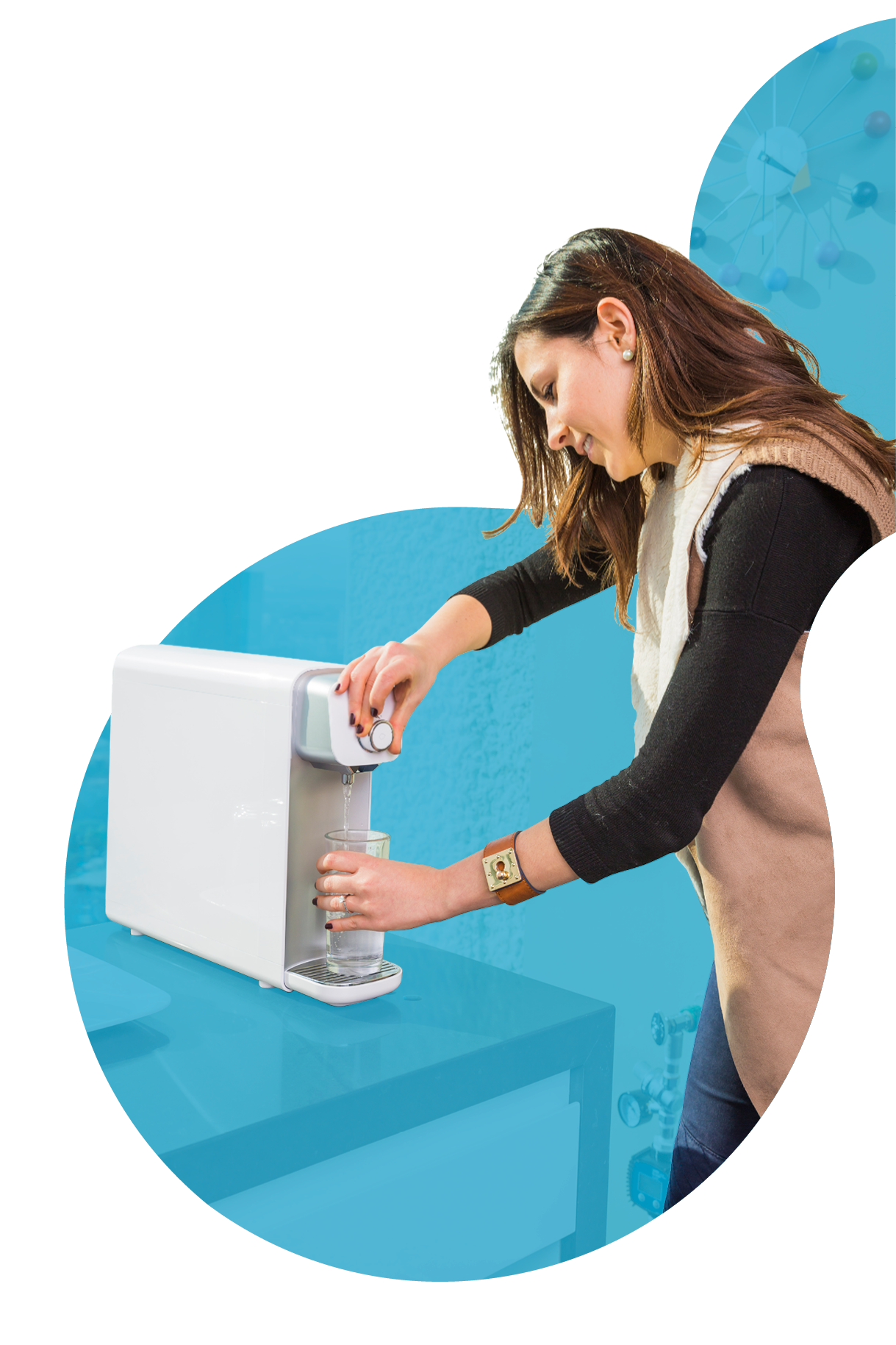
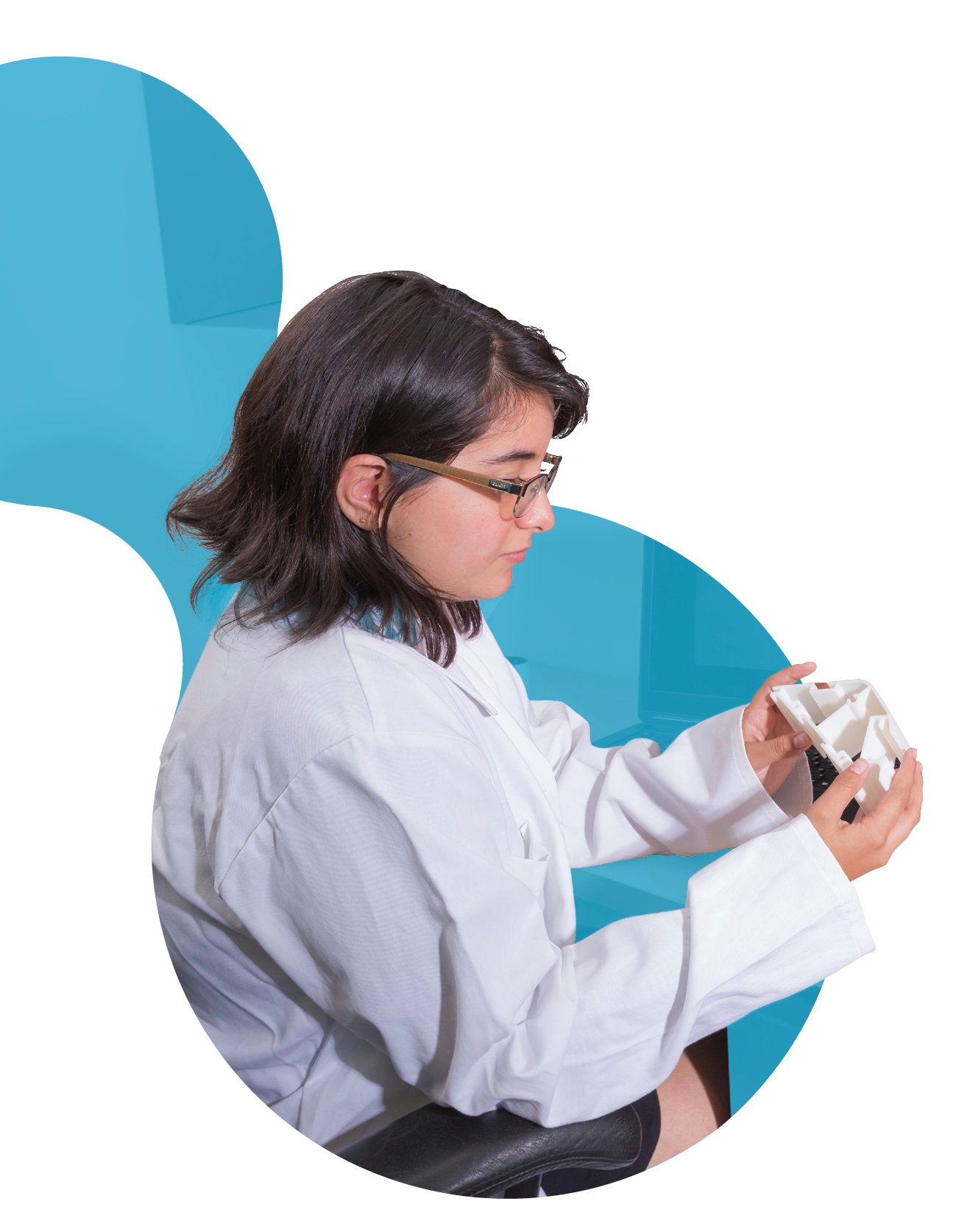
Aside from the current makeup of our portfolio, innovation encourages us to work on those solutions that could narrow the gap between people who have access to water and sanitation and those who don’t. In addition to the ongoing innovation carried out in the CID, the collaboration with AIC Chile, and the projects that our new innovation center Sanzfield has implemented, we are also working together with universities and research centers to develop, assess, and validate technology (Universities in Columbia, Texas, and Utah), as well as to develop pilot programs (Universities of Marquette, Wisconsin-Milwaukee, Massachusetts, Stanford, and Caltech). All this is reflected in the signing of 13 research and collaboration agreements in 2017, totaling 43 of these in 6 countries.
The development of pilot projects for testing and validating the estimated impact of our solutions, as well as to detect improvement opportunities in our products, is essential in the Company’s innovation process. Throughout this year, several prototypes of the Sanzfield research, innovation, and development projects were installed; we will continue monitoring the results of the project to integrate our findings and keep maturing these technologies.
The quality of our customer-centered products and services is our main commitment. We work with strict adherence to our Quality Policy, offering a portfolio that meets the highest standards and regulations issued by the regulatory authorities of the countries where we have operations.
Our plants have quality management systems designed in line with standard ISO 9001, and 12 of our plants in Mexico, Guatemala, and Peru are certified. On the other hand, our plants in Argentina and Brazil operate following the requirements of this standard. In 2017, we worked on implementing updates to said standard to comply with its 2015 version.
To monitor compliance with our policies and guidelines, as well as the specifications of the rules and standards applied in management and to the products, we carry out internal audits coordinated by the Quality Department, as well as external audits, carried out by specialized third parties.
The materials used to manufacture our products are mainly polyethylene and polypropylene resins. In 2017, we consumed a total of 51,109 tons of these materials, translating into a 6.8% increase compared to the figure for 2016. However, we continue to opt for reusing the plastic that results as waste from our roto-molding and injection processes. Its reintegration meets our safety standards, ensuring that
our customers and users receive the best quality products, while reducing our waste generation. In 2017, we used a total of 5,852 tons of recycled materials in our processes, translating into a 40.1% increase compared to 2016.
Our focus on quality is complemented by timely and transparent communication with our customers and users. For our overall solutions, we adhere to the corresponding standards for the various countries where we have operations, striving to comply with the disclosure requirements of each one. In addition, we have a communication strategy that defines and unifies the communication messages and tone for our institutional brand and our various business lines, ensuring their effectiveness for the segment to which they are destined.
The evolution of our business model and our focus on service encourage us to outdo our customers’ and users’ expectations by focusing on constant improvement. Thus, our Customer Service Center (CSC) carries out a survey to monitor the satisfaction levels for the various solutions that we offer on a quarterly basis.
CUSTOMER SATISFACTION RESULTS 2016 AND 201714
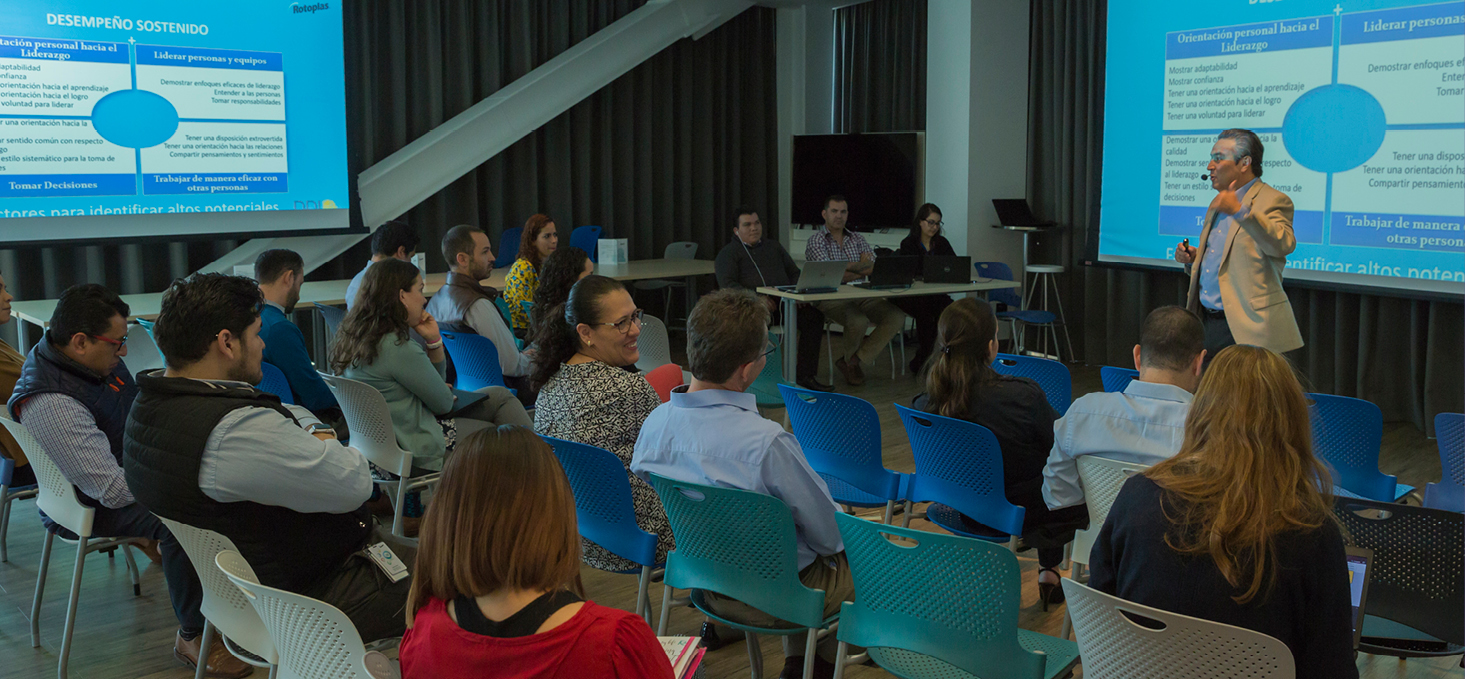
On a group level, the indicators with the largest increases were: delivery service, vendor service, and advertising support; another still on an uptrend is the returns indicator. Nonetheless, we must continue to work on the processes that encourage repeat purchases and recommendations of our brand.
The emphasis we place on our product quality pervades our whole supply chain. Our raw materials suppliers, and particularly those who provide us with resins, are key in ensuring the safety and quality of the final product. In 2017, we destined $4.278 billion Mexican pesos to suppliers, as a result of an increase in sales, as well as a significant hike in raw material prices and transportation costs compared to 2016.
In line with our business model, which favors manufacturing near the destination market to minimize shipping distances, we continue to prefer local supplies. In 2017, 81.5% of spending went to local suppliers, increasing by 16% from the previous year.
In order to ensure that our products achieve maximum quality and get delivered in an optimal time, we develop and train our suppliers with a focus on incorporating best practices.
EThis is why, in 2017, we provided a total of 2,152 courses to train and develop 17,894 people including plumbers, vendors, and installers. Moreover, we worked together with the Mexican Ministry of Education (SEP for its Spanish acronym) to train and certify plumbers in the country. The CONOCER certification, which has curricular value, aims to strengthen the skills and knowledge of the plumber community, opening doors to new job opportunities. This year, a total of 205 plumbers were certified as “Water Solutions Consultants”.
At Grupo Rotoplas, we adhere to processes. Our work methodology is based on identifying and mapping these processes to then foster their adoption among our collaborators. Process implementation enables coordination during the development of activities, provides greater operating efficiency, and allows for operating cost and expense reduction. This approach is strengthened through minimal cost and optimal expense initiatives, based on the Plan-Do-Check- Act methodology (PDCA). This initiative enables us to identify breaches in cost and expenditure accounts to manage them in matrix form and achieve their optimization. The methodology pertains to the Supply, Human Resources, and Financial Planning departments, as well as to the managers of every other department in the Company.
The ongoing improvement and operating efficiency guide our solutions’ productive processes, from selecting and supplying raw materials to marketing our products. Proper demand planning is essential; therefore, sales forecasts for the following months and our capacity in terms of machinery and inputs are all taken into account. The next step is to prepare a production plan to distribute the workload among the various plants and set timeframes. As the products are released, their distribution must be coordinated, considering client requirements and available inventory, and coordinating their shipping through third parties.
In the various stages, we strive to achieve efficient resource utilization, including energy, as well as to reduce emissions and waste generation, opting for forms of recycling. With regard to production, we monitor our various plants to identify good practices and replicate them throughout our operations.8.
We should note that we have environmental management systems adhering to standard ISO 14001, under which three of our plants in Mexico and Peru14 are certified; however, the rest of our plants function in accordance with the guidelines of this standard.
In 2017, our energy consumption increased by 18.1% compared to 2016, given a 51.6%17 hike in the amount of processed resin in our plants. As for our energy efficiency, the need for 1,623 KWh18 per ton of resin that we processed in 2017 translated into a 28.4% decrease compared to the energy required a year earlier. The decrease in the amount of energy required per ton of processed resin reflects the actions implemented to reduce our electricity, natural gas, and LP gas consumption as part of the minimal-cost initiative implemented in our plants in Mexico, Peru, Brazil, and Guatemala.
We carried out our first Greenhouse Gas emissions (GHG) inventory, following the guidelines of the international Greenhouse Gas Protocol from the World Business Council for Sustainable Development (WBCSD) and the World Resources Institute (WRI), tallying a total emission of 48,530 tons of CO2e, which translates into an emissions intensity of 0.46 ton of CO2e per ton of processed resin.
Moreover, we opt for using clean energy sources, such as electric energy from cogeneration, which is supplied to our extrusion, milling, and injection processes and represents 82.2% of the total electricity destined to production. This technology enabled us to avoid the emission of 6,888 tons of CO2e throughout 2017.
Striving to find out the effects of our operations during the distribution stage, we included the GHG emissions from shipping vehicles used for product distribution, totaling 17,671 tons of CO2e emissions during 2017.
In addition to calculating our GHG emissions, we calculated the emissions of other harmful gases into the atmosphere, generated by the combustion of natural and LP gas in our roto-molding process. As a result of this calculation, we arrived at a total of 30.44 tons of nitric oxide (NOx) and 1.65 tons of particulate matter (PM). In addition to calculating our GHG emissions, we sought to find out the potential impact that a selection of our products could have throughout their lifecycle on global warming. To find out these effects, we are carrying out a Carbon Footprint study, based on standard ISO 14067: 2013, whose results will be available in 2018.
We separate waste at our plants, complying with the conditions for storing it, per our internal procedures related to our environmental management system. Next, they are delivered to companies authorized for their transport and management. Thus, hazardous waste is deposited in regulated secure landfills. For nonhazardous waste, we look for recovery opportunities, destining them to companies that see to their recycling.
While our processes are not particularly water-intensive, we work on optimizing our use of it as part of our commitment with a culture of rational use of water resources. In 2017, we required 106,726,000 liters and recycled 22.3%. The increase in water consumption compared to 2016 reflects the variation in sales and production between both periods.
In addition to calculating the water consumption of our operations, we seek to find out the potential impact that a selection of our products could have throughout their lifecycle on the resource that is at the core of our business: water. To find out these effects, we are carrying out a Water Footprint study, based on standard ISO 14046: 2014, whose results will be available in 2018.